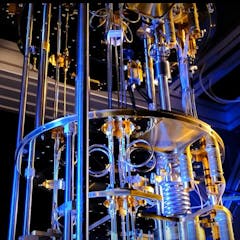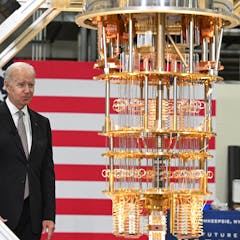
Articles on Computers
Displaying 1 - 20 of 152 articles

Our modern lives are influenced by algorithms at every step. We can trace this influence back more than 1,200 years ago – to a Muslim mathematician.

Quantum computers that work at slightly higher temperatures could be cheaper and more accessible.

Quantum computing has huge promise from a technical perspective, but the practical benefits are less clear.

Office workers are sedentary for hours at a time. Our research looked at what they should do to stay healthy.

The complex task of tackling online terror needs human eyes as well as artificial intelligence.

Computer data centres produce vast amounts of heat that often gets wasted - now that’s being harnessed to warm swimming pools and improve overall energy efficiency.

Apple’s phenomenal success and the field of user experience design can be traced back to the launch of the Macintosh personal computer.

Neuromorphic computers aim to one day replicate the amazing efficiency of the brain.

Chinese technology advancements cannot be contained, and the country is increasingly an education and research powerhouse.

The padlock symbol simply means that the data being sent between the web server and the user’s computer is encrypted and cannot be read by others. But many people don’t know that.

Several companies have made quantum computers, but these early models have yet to demonstrate quantum advantage: the ability to outstrip ordinary supercomputers.

How does typing affect the way we process what we write, and what are the consequences of giving up handwriting at school age?

The artificial intelligence boom means a multi-trillion dollar industry is coming into existence before our eyes. With great opportunity come great risks, as two important new Australian reports show.

The Canadian government is planning to implement ‘right to repair’ for electronic devices. This has the potential to give consumers more options, and challenges corporations’ hold over knowledge.

Many of the pioneers who began developing artificial neural networks weren’t sure how they actually worked - and we’re no more certain today.

A new film changes its story based on the emotions expressed by the viewer.

ChatGPT could lead to substantial learning gains if it’s used as a tutor, an online learning specialist says.

In the age of AI, people might wonder if there’s anything computers can’t do. The answer is yes. In fact, there are numerous problems that are beyond the reach of even the most powerful computers.

A new study found that the device people used to communicate in a negotiation made a big difference in how likely they were to deceive for personal gain.

It’s time we stopped using the brain as shorthand for machines
